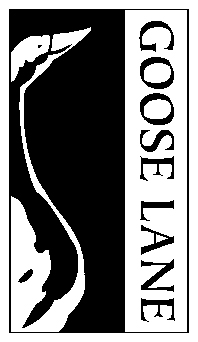Excerpt from The New Brunswick Rangers in the Second World War
“Ortona. Vimy Ridge. Juno Beach. Queenston Heights. These four places echo throughout Canadian military history and resonate in the minds of many Canadians. Other important names ring much less forcefully in popular memory. We would like to change that.”1
It is unreasonable to expect schools to cover every battle in history, but that does not make one battle less deserving of our attention than another. It is therefore necessary to carry on these conversations outside of the classroom, and we are grateful so many chose to do so. From online articles such as “Forgotten Fights: Battle of Medak Pocket” referenced above, to YouTube videos like “Forgotten Chinese-Canadian fought in WW 1’s Battle of Hill 70”2, the stories of troops and battles are being shared.
The New Brunswick Rangers, a regiment headquartered in Sussex, NB, was placed in active service in 1939. They are one unit among many that were seemingly forgotten. In his book, The New Brunswick Rangers in the Second World War, Matthew Douglass uncovers The New Brunswick Rangers’ participation in the war. Their story, like so many others, is worth telling. In this excerpt, Douglas describes the regiment after the war.

Many veterans of the Rangers stayed in southern New Brunswick to make a life and raise a family. Others dispersed across Canada to build their post-war lives. The unit’s distinguished wartime service was not enough to save it from amalgamation with The Saint John Fusiliers on August 26, 1946. The Fusiliers had spent their war in home defence tasks, with service on Canada’s east and west coasts. In the event, even the newly amalgamated The South New Brunswick Regiment was short-lived — by December 2, it had been renamed The New Brunswick Scottish. That curious distinction lasted for eight years until 1954, when all New Brunswick infantry units were folded into The Royal New Brunswick Regiment, and what was left of the militia infantry of southern New Brunswick was absorbed into the 1st Battalion, The Royal New Brunswick Regiment (Carleton and York); the 2nd Battalion, The Royal New Brunswick Regiment (North Shore) was based in Bathurst.
The 1954 amalgamations privileged units that had seen combat service overseas. The Carleton and Yorks had distinguished themselves in Italy, while the North Shores were the only New Brunswick unit to land on D-Day in France. All of this served to “hide” the Rangers from the public eye, and even their presence in the Sussex, New Brunswick, area was obscured by the longevity and prestige of the local armoured unit, the 8th Princess Louise’s (New Brunswick) Hussars. It did not help that the Rangers had been both a small unit (barely 220 officers and men) and, unlike infantry units, in which casualties were high and many men passed through their ranks, the Rangers had suffered few losses and consequently had a very small cadre of veterans. Finally, the kind of work they did, usually embedded in the story of other infantry battalions and armoured regiments, often made their contribution indistinguishable and unremarkable in post-war histories. In short, after 1945, The New Brunswick Rangers quickly became one of Canada’s many forgotten combat units.
Regimental gatherings occurred into the 1990s, and veterans undertook commemorative actions. One of these efforts is still with us today, as the association fundraised for the erection of The New Brunswick Rangers monument located at Burton Park in Sussex. Lieutenant (later Captain) Joseph Hanford Geldart, whose father was killed during the First World War, regularly spoke at Remembrance Day services at local schools as well as to Kiwanis and Rotary groups in the Sussex and Petitcodiac region throughout the 1980s and 1990s. He talked, very briefly, of his own war, focusing specifically on August 12, 1944, when a shell killed Privates Athol Wood and Thomas Hall and wounded him and two others. “We three were luckier than the other two,” he said in a talk to Sussex High School in November 1983. “It is a sobering experience to see your comrades’ lives snuffed out beside you and to have come so close yourself.” Geldart never mentioned his part that day. The Rangers’ war diary commends him for his actions: “despite his wound and under shell fire he rushed to the assistance of L/Cpl R. Richards who had been hit in the head and legs and helped carry him into a slit trench where his wounds received attention from stretcher bearers.” The Sussex cenotaph lists twenty men killed during the Second World War, many of whom Geldart went to school with, played sports with, and served with. He deflected any heroism that could be bestowed on him, preferring to recall their memory and that of all those who did not return, whenever delivering a Remembrance Day speech.
Excerpted from The New Brunswick Rangers in the Second World War. Copyright © 2020 by Matthew Douglass.
1 “Forgotten Fights: Battle of Medak Pocket.” Veterans Affairs Canada,
February 10, 2020, https://www.veterans.gc.ca/eng/art-hub/battle-of-medak-pocket
2 CBC News: The National. “Forgotten Chinese-Canadian fought in WW 1’s Battle of Hill 70.”
September 6, 2017. Video, 5:50. https://www.youtube.com/watch?v=Br82jbp5a9k
